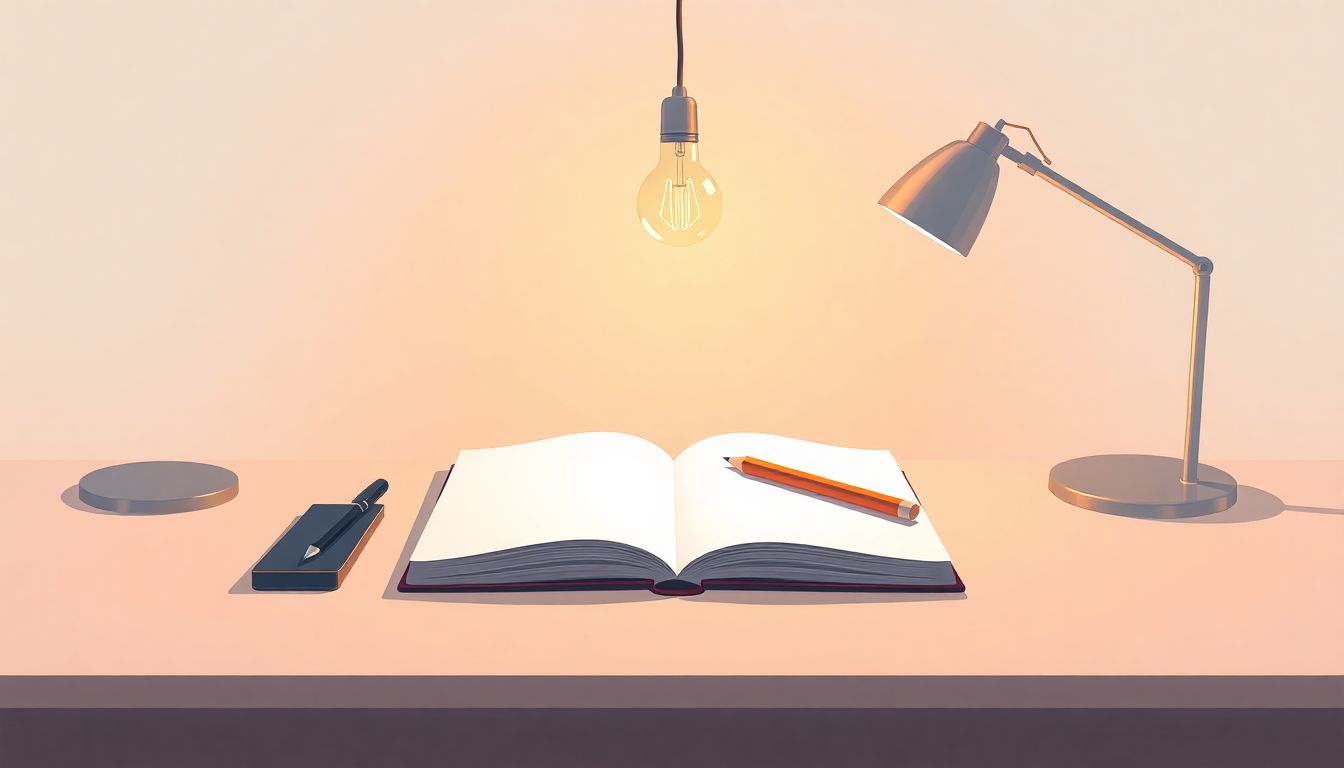Designing physics experiments can feel daunting. It’s easy to get stuck on what concepts to explore or how to create engaging experiments that truly illustrate those ideas. Many of us have been there, scratching our heads and wishing for a little spark of inspiration.
But fear not! If you stick around, you’ll discover some fantastic prompts that will not only ignite your creativity but also simplify the process of designing effective physics experiments. These prompts will help you brainstorm ideas and tailor them to your needs.
From exploring fundamental concepts to customizing prompts for specific topics, we’ve got plenty of tips and examples lined up for you. Get ready to transform the way you approach physics experiments!
Key Takeaways
- Designing physics experiments can be challenging, but specific prompts can spark creativity and simplify the process.
- Use targeted prompts to generate unique and engaging experiments focusing on different physics concepts.
- Customize prompts based on the age group, available resources, and real-world applications for better engagement.
- Utilizing tools like ChatGPT can streamline the process for brainstorming and refining experiment ideas.
- Incorporate various difficulty levels and clear explanations in your prompts to cater to diverse learning needs.

Best ChatGPT Prompts for Designing Physics Experiments
Using ChatGPT to generate physics experiment designs can save you time and enhance your creativity.
Here are some prompts to get started:
- “Generate a list of five unique physics experiments suitable for high school students, focusing on mechanics.”
- “Create a detailed plan for an experiment that demonstrates the principles of thermodynamics using household items.”
- “Suggest innovative physics experiments that can be performed with limited resources and a short timeframe.”
- “Propose a series of experiments that explore the relationship between electricity and magnetism for an undergraduate lab.”
- “List engaging physics experiments that can be conducted safely at home, including required materials and setup instructions.”
How to Use Prompts for Physics Experiment Ideas
To make the most of prompts when brainstorming physics experiments, follow these steps:
- Identify the specific physics concept you want to explore. This helps narrow your focus.
- Use general prompts to spark initial ideas. For example, ask ChatGPT for ideas related to a particular topic.
- Refine generated ideas by adding constraints, such as “using everyday materials” or “suitable for a classroom setting.”
- Incorporate related questions to build upon initial ideas. For instance, inquire about variations of suggested experiments.
- Compile and evaluate the generated ideas, selecting the ones that best meet your educational goals.
Creative Prompt Examples for Physics Experiment Designs
Looking for some inspiration? Here are some creative prompts tailored for designing physics experiments:
- “Design a physics experiment that illustrates Newton’s laws of motion using toys.”
- “Suggest an interactive experiment to demonstrate wave properties, suitable for elementary school students.”
- “Devise a physics experiment that visualizes energy transformation in a simple way.”
- “Create a project that challenges students to invent their own device based on the principles of aerodynamics.”
- “Outline an experiment that helps students understand the concept of kinetic vs. potential energy using a roller coaster model.”
Tips for Generating Effective Physics Experiment Prompts
Generating effective physics experiment prompts is easier if you follow these tips:
- Be specific about the physics topic or concept to achieve a focused outcome.
- Encourage creativity by asking for experiments that include real-world applications.
- Incorporate various difficulty levels in your prompts, accommodating different student abilities.
- Request explanations for the experiments to deepen understanding of the underlying principles.
- Edit and refine your prompts based on previous responses to enhance their effectiveness in future queries.

Common Physics Concepts to Address with Experiment Prompts
When designing physics experiment prompts, it’s essential to focus on core concepts that students need to understand.
Here are common physics themes to inspire your prompts:
- “Create an experiment that illustrates the laws of thermodynamics using a common kitchen appliance.”
- “Design an experiment to demonstrate the principles of conservation of momentum with marbles.”
- “Suggest an experiment that explores electromagnetic induction using coils and magnets.”
- “Propose a series of experiments that differentiate between kinetic and potential energy using various objects.”
- “Outline an experiment to visualize sound waves using a tuning fork and water.”
These concepts provide a solid foundation for developing engaging and educational experiments.
How to Customize Prompts for Specific Physics Topics
Customizing prompts for specific physics topics can help tailor experiments to your educational needs.
Follow these actionable tips to create better prompts:
- Pick a particular topic, like optics or mechanics.
- Include specific parameters, such as age group or available resources.
- Encourage real-world applications by framing prompts around everyday experiences, for example: “Craft an experiment that compares speed and velocity using cars and distances.”
- Utilize specific questions to guide the prompts, such as “How can I demonstrate refraction using a prism?”
- Iterate on the prompts after testing them in the classroom to refine and enhance their engagement.
Customizing allows you to focus on what matters most to your students while keeping them engaged.
Using ChatGPT to Enhance Your Physics Experiment Design Process
ChatGPT can significantly streamline your physics experiment design process.
Here’s how to leverage this tool effectively:
- “Ask ChatGPT to brainstorm five physics experiments related to energy conservation.”
- “Request detailed procedures for an experiment on projectile motion using a smartphone.”
- “Inquire about variations of an experiment on simple harmonic motion for advanced students.”
- “Seek out safety precautions for a classroom experiment involving electricity.”
- “Generate a list of questions to discuss after conducting an experiment to reinforce learning.”
Utilizing these prompts can lead to a more efficient and informed experiment design process.
FAQs About Physics Experiment Prompts for ChatGPT
Here are some common questions regarding using ChatGPT for physics experiment prompts:
What types of prompts can I use?
You can ask for experiment ideas, detailed plans, or variations on existing experiments.
How do I choose a good prompt?
A well-structured prompt should be specific, clear, and constraints-based to achieve focused results.
Can I edit prompts after initial generation?
Absolutely! Feedback from previous responses can help you refine your prompts for better outcomes.
How can I ensure student engagement with prompts?
Incorporate real-world applications and hands-on activities within your prompts to keep students interested.
These FAQs can help you maximize the use of ChatGPT in designing engaging physics experiments.

How to Customize Prompts for Specific Physics Topics
Customizing prompts for specific physics topics helps ensure the experiments align with your educational objectives.
Start by selecting a physics topic that you want to focus on, like electromagnetism or optics.
Then, clearly define the constraints you want to apply, such as age group or available materials.
This can look like “Create a hands-on experiment about electric circuits using batteries and light bulbs for sixth graders.”
You can also incorporate real-life situations, which makes learning more relatable. For example, try “Design an experiment that uses everyday objects to illustrate friction and motion.”
Lastly, don’t hesitate to tweak your prompts based on feedback or results from initial experiments.
This iterative process can help you create more engaging and relevant experiments over time.
Using ChatGPT to Enhance Your Physics Experiment Design Process
ChatGPT can be a powerful collaborator in your physics experiment design process.
To get started, ask specific questions like “Generate five engaging physics experiments focused on energy conversion.”
Next, request detailed instructions by saying, “Outline the step-by-step process for demonstrating projectile motion using simple materials.”
You can also seek alternative approaches by asking, “What are three variations on a simple harmonic motion experiment for high school students?”
Furthermore, make sure to include safety considerations by prompting, “List essential safety precautions for conducting experiments with magnetism.”
Lastly, boost classroom discussions with prompts like, “Provide five questions I can ask students to reflect on what they learned from the experiments.”
FAQs About Physics Experiment Prompts for ChatGPT
Here are some frequently asked questions when it comes to using ChatGPT for physics experiment prompts:
What types of prompts can I use?
You can explore a range of prompts that cover generating ideas, detailed experimental designs, or asking for modifications to existing experiments.
How do I choose a good prompt?
A good prompt should be specific, clear, and may contain constraints to direct ChatGPT’s output effectively.
Can I edit prompts after initial generation?
Yes, adjusting prompts based on previous responses is encouraged and can lead to improved results.
How can I ensure student engagement with prompts?
To enhance engagement, frame prompts that integrate practical applications and hands-on activities, ensuring students relate to the content.
By answering these questions, you can maximize your use of ChatGPT for effective physics experiment designs.
FAQs
You can design a variety of experiments, including mechanics, thermodynamics, waves, and electromagnetism. ChatGPT can help generate ideas tailored to specific physics concepts or educational levels.
You can customize prompts by specifying the topic, desired complexity, and intended audience. For instance, you might ask for simple experiments suitable for high school students focusing on Newton’s laws.
Focus on clarity and specificity while including key concepts. Encourage creativity by asking for unexpected applications or real-world connections related to the topic. Additionally, consider desired outcomes and available materials.
ChatGPT can provide brainstorming assistance, suggest experimental setups, and identify potential issues. By offering instant feedback, it allows you to iterate on ideas quickly, saving time while enhancing creativity and thoroughness.
